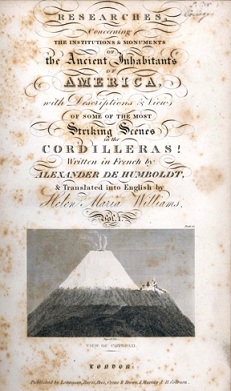Alexander von Humboldt’s new world
Alexander von Humboldt was a biogeographical maximalist, if that makes any sense. The Prussian-born von Humboldt had traveled through much of Latin America by the time he was 40, where he scientifically documented many of its surface features for the first time, and forwarded research that developed the burgeoning fields of meteorology and physical geography. His approach was holistic—by the end of the nineteenth century, “Humboldtian science” was the term generated for the combination of scientific empiricism, precise instrumentation, and the pursuit of the interconnectedness of all things von Humboldt found in his approach to the natural world.
A recent profile in Nature Conservancy magazine, “Humboldt’s New World,” takes on the explorer-scientist and his encounters in Latin America, many of which involve terrain protected by the Conservancy. Of his journey, Julian Smith writes:
The Prussian naturalist and explorer Alexander von Humboldt was midway through a five-year, 6,000 mile voyage of scientific discovery through Latin America that would revolutionize thinking in fields form astronomy to zoology. Charles Darwin himself called Humboldt “the greatest scientific traveler who ever lived,” and when Darwin set off on his own journey aboard the Beagle three decades later, he took a copy of von Humboldt’s seven-volume travel narrative.
The article goes on to engage with von Humboldt’s travels at length, helping to raise the profile of this forgotten scientist as, among other roles, a big-picture conservationist.
We publish volumes integral to the further study of von Humboldt (a series aptly named, “Alexander von Humboldt in English“), which include Political Essay on Cuba , Views of the Cordilleras and Monuments of the Indigenous Peoples of the Americas, and Essay on the Geography of Plants. Interested readers might want to know that the image Humboldt made of the Chimborazo volcano mentioned in the Nature Conservancy piece, as translator Sylvie Romanowski pointed out, is part of a much larger plate, “Physical Tableau of the Andes and Neighboring Countries,” which is reproduced full-size and folded into the Chicago edition of Essay on the Geography of Plants, accompanied by analysis from Romanowski and detailed bibliographic materials from the book’s editor, Stephen T. Jackson.
